Work out what you need and leave behind what you don’t with our inside guide to the best safari camera gear.
The Best Safari Camera Gear
Going on safari is, for many, a once-in-a-lifetime experience. And even if you’ve fallen in love with the savannah and return again and again, some things stay the same: it’s immensely satisfying to take great photos home with you.
And, for that, you need the right gear.
The dusty conditions on safari call for sturdy, weatherproof equipment. The fast and fickle movements of the animals require speed, patience and a telephoto lens.
So, let’s walk you through the best safari camera gear for your next trip.
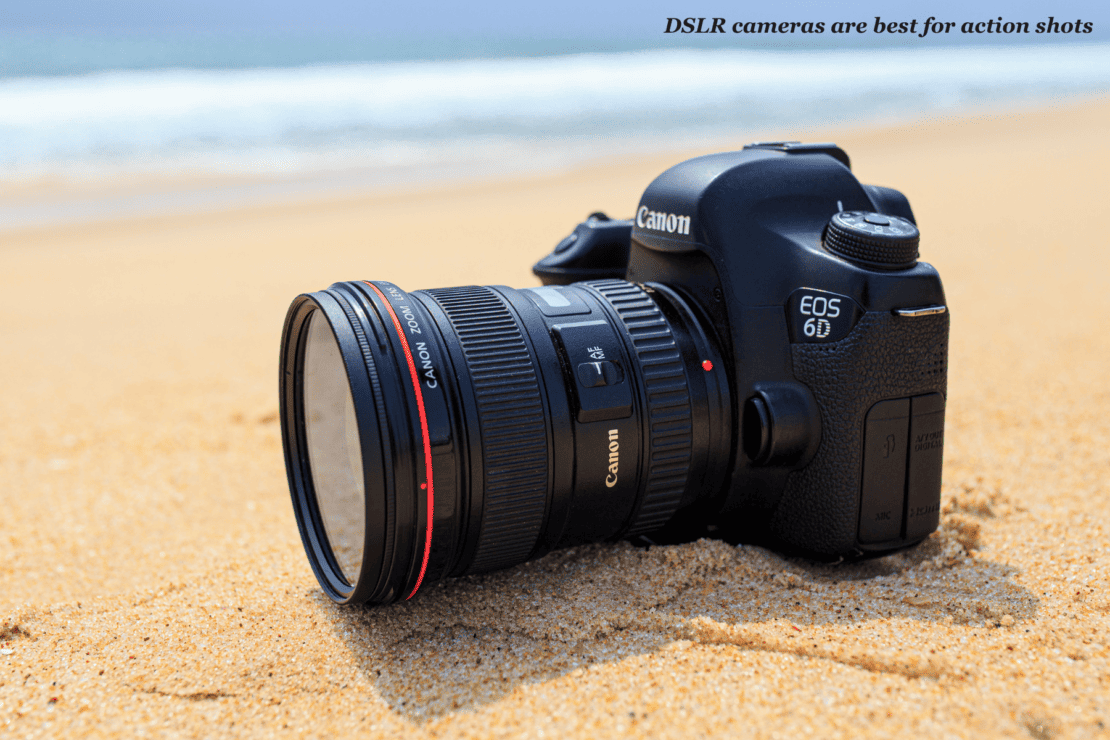
DSLR cameras are best for action shots
The workhorse camera for safari photography is a digital SLR (DSLR) because these cameras also have fast burst shooting modes to capture action sequences.
Your iPhone may work well enough for city shots, but for wildlife photography, it generally can’t keep up.
Other key features to look for include a large buffer for continuous shooting, wireless connectivity for transferring images to your mobile device, and an optical viewfinder.
Zoom lenses with longer primes are ideal for distant shots
The longer the lens the better on safari to photograph animals from afar. Rather than having a 50mm prime lens, lenses that end in 300mm, 400mm, 500mm, 600mm, and 800 as primes would be great as zooms to capture animals standing a long distance away. There are multiple zoom (or telephoto) lenses available, but a focal length of at least 200 mm will work well.
Telephoto lenses
- Lower-budget: 28-300 mm or 70-300 mm lenses are great for beginners.
- Middle of the range: 150-600 mm lens for next-level daylight photos.
- Professional: 70-200 mm f/2,8 prime lens along with 400 mm f/4 or even f/2,8 prime lenses at the highest end of the spectrum.
It’s worth remembering that a higher-prime zoom lens allows you to capture close-up shots of wildlife without disturbing their natural behaviour. For skittish species like predators, this reach is critical to portray them in their habitats without scaring them off.
Wide Angle Lenses
In contrast, wide-angle lenses are helpful for shooting dramatic skies and moving herds:
- Lower-budget: 18-55 mm, the most popular range. Or, 10-24 mm range to give a wider angle for your safari.
- Middle of the range: a 15-30 mm f/2,8 wide lens is a high-quality product for landscapes.
- Professional: 24-70 mm f/2,8.
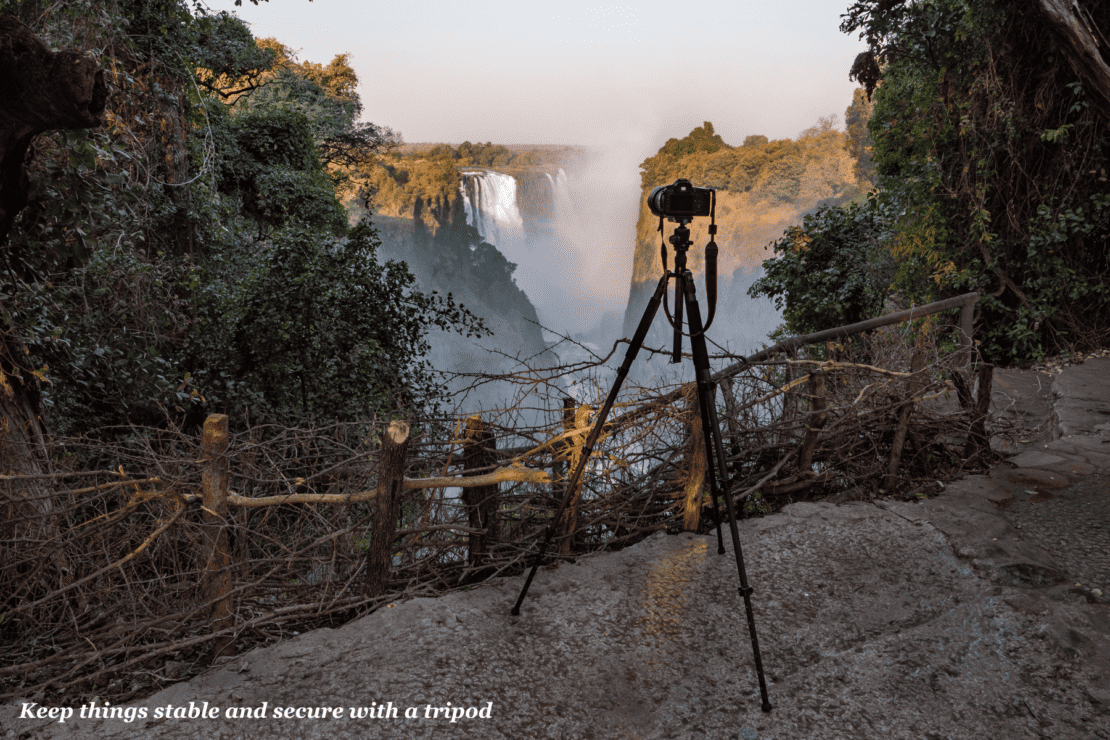
Tripods for stable shots and starry skies
On an African safari, a tripod is a useful piece of kit for landscape shots when you need to stabilize those heavy long telephoto lenses.
Other than that, you won’t need a tripod for much. The majority of the time, you’ll be taking photos from inside a vehicle, where a monopod is much more usable.
That said, tripods can also be helpful for low light or long exposure photography.
Look for a lightweight carbon fibre design that can support your camera’s weight and give you the stability you need when capturing shots.
The tripod should extend high enough for eye-level shooting and have a swivelling ball head for angling the camera towards fast-moving subjects.
Brands like Manfrotto and Gitzo offer reliable performance so you can capture incredible sunsets over the Serengeti or wildlife in the distance with ease.
Remote shutter release for long exposures
A remote shutter release enables you to trigger the camera without touching it, which could shake and blur the shot. While remote shutters are excellent for capturing stars at night and stunning landscapes, they are not great for wildlife shots and sudden movement. It is far slower and harder to take shots with a remote shutter than to just press the button yourself in that instance.
For longer landscape exposures, at sunrise or sunset, opt for a tethered release or wireless remote to control the camera from afar.
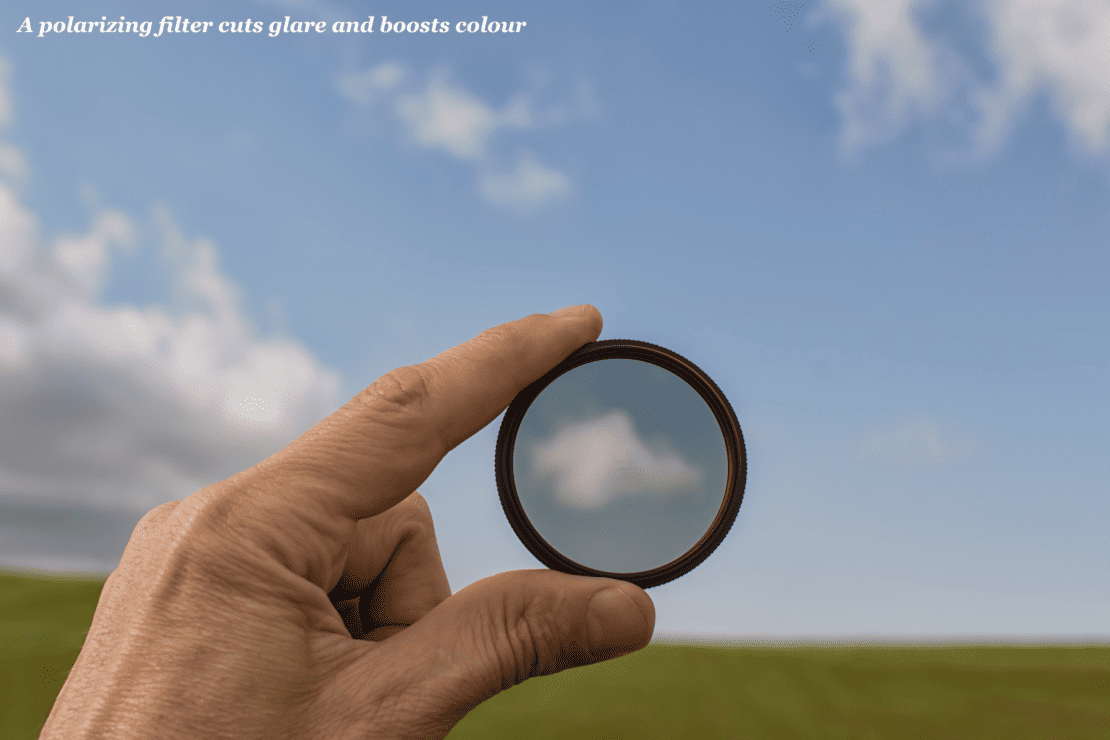
Polarizing filters for light contrast and colours
A polarizing filter is essential for cutting glare and boosting colour saturation in bright conditions.
Polarizers significantly reduce reflections and improve contrast by filtering out specific light wavelengths, which amplifies blue skies and cloud details. They allow your camera to better capture the incredible hues and textures of the African landscape by minimizing glare. Just remember, they cut light, so adjust shutter speed accordingly.
Extra batteries and memory cards
When you’re out in the field, it is always worth having plenty of spare camera batteries and high-capacity memory cards with you. Expect to use up to three to four batteries per day on active safari shoots, and bring double the amount of memory cards you expect to need as a backup.
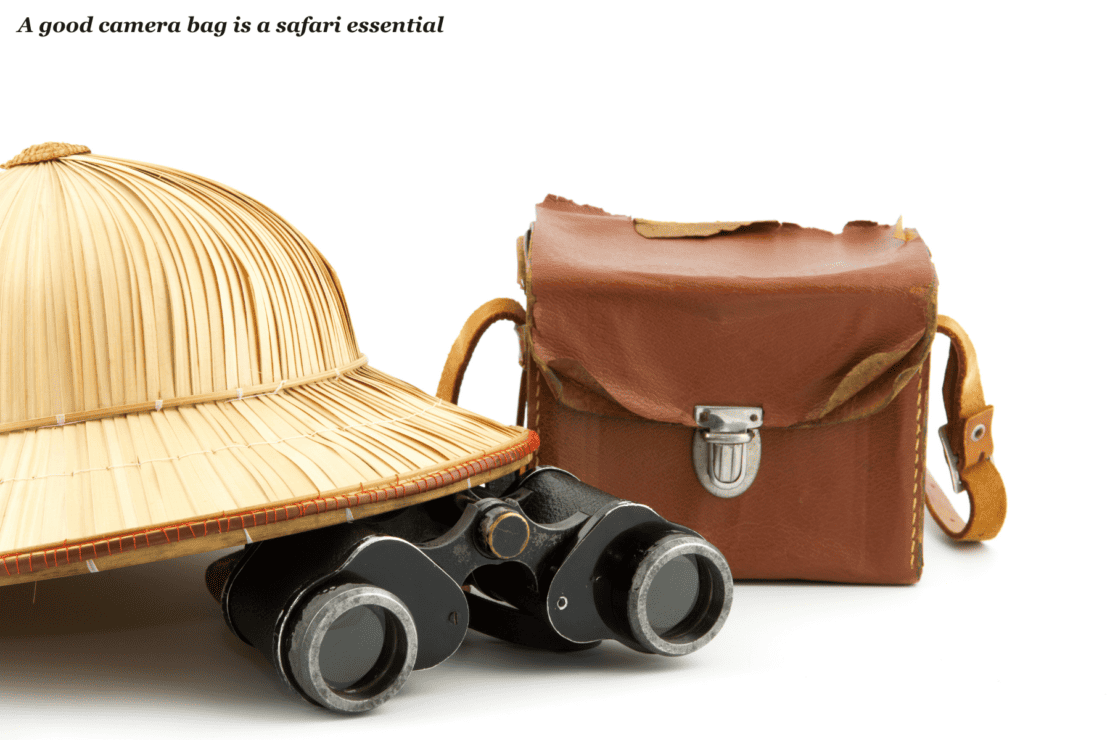
Weatherproof camera bags and protective cases
Protect your gear with weatherproof camera bags designed for outdoor use — look for durable, abrasion-resistant nylon or canvas materials that will withstand regular use.
Backpack styles allow you to comfortably carry equipment while hiking and exploring. You can wrap camera bodies and lenses in rain covers or plastic bags too for extra weather protection when traveling in open safari vehicles.
Sensor cleaning supplies
In dusty and humid environments, camera sensor dust and dirt is inevitable, but it can ruin your equipment and your shots, so plan ahead.
Pack sensor cleaning swabs, solution and an air blower like the Giotto Rocket Air Blaster to clean the sensor in the field.
Just remember to only clean when the battery is out of the camera, so as not to cause any damage.
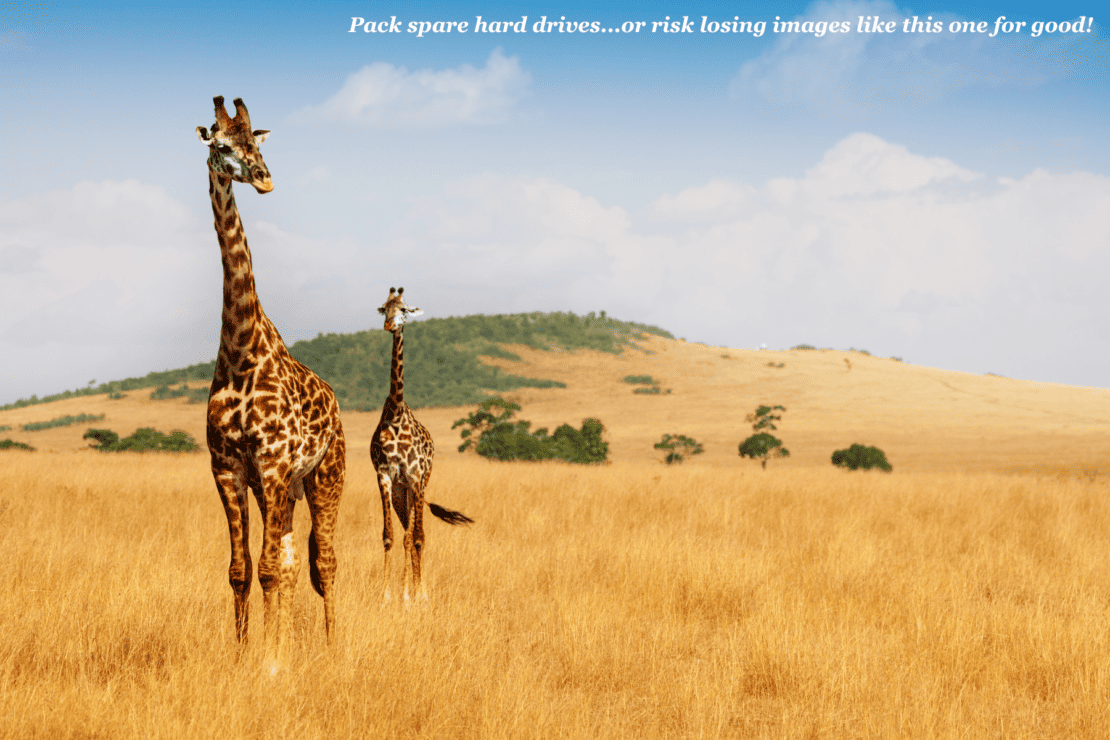
Backup drives to safeguard images
Bring a laptop and hard drives or flash drives to download and back up your images each day.
The dust and humidity of the savannah can wreak havoc on electronics, so be sure to bring protective covers for your laptop and drives.
Waterproof hard cases offer the best protection from the elements, while portable solid state drives (SSDs) are a great option for backing up images thanks to their durability and fast transfer speeds.
If you’re bringing traditional hard disk drives, choose ones with rugged, shock-proof designs to give you peace of mind that your work won’t be lost.
The Best Safari Camera Gear: Concluding Thoughts
A photography safari is an incredible opportunity to capture stunning wildlife and landscape images.
However, the unique conditions and challenges this sort of trip provides requires having the proper camera equipment with you to ensure the very best images. With this introduction to the best safari camera gear required, you’ll be ready to have an amazing trip.
More Practical Travel Tips
- How to plan a road trip and avoid the most common mistakes
- Download our guide to car rentals here
- How to drive across Africa
- Your ultimate road trip checklist
- 5 powerful ways travel helps the planet
- Your ultimate international travel checklist
- Your complete holiday packing guide with printable PDF
- The Osprey Farpoint 36
- The Osprey 65 Review: a backpack on wheels?
